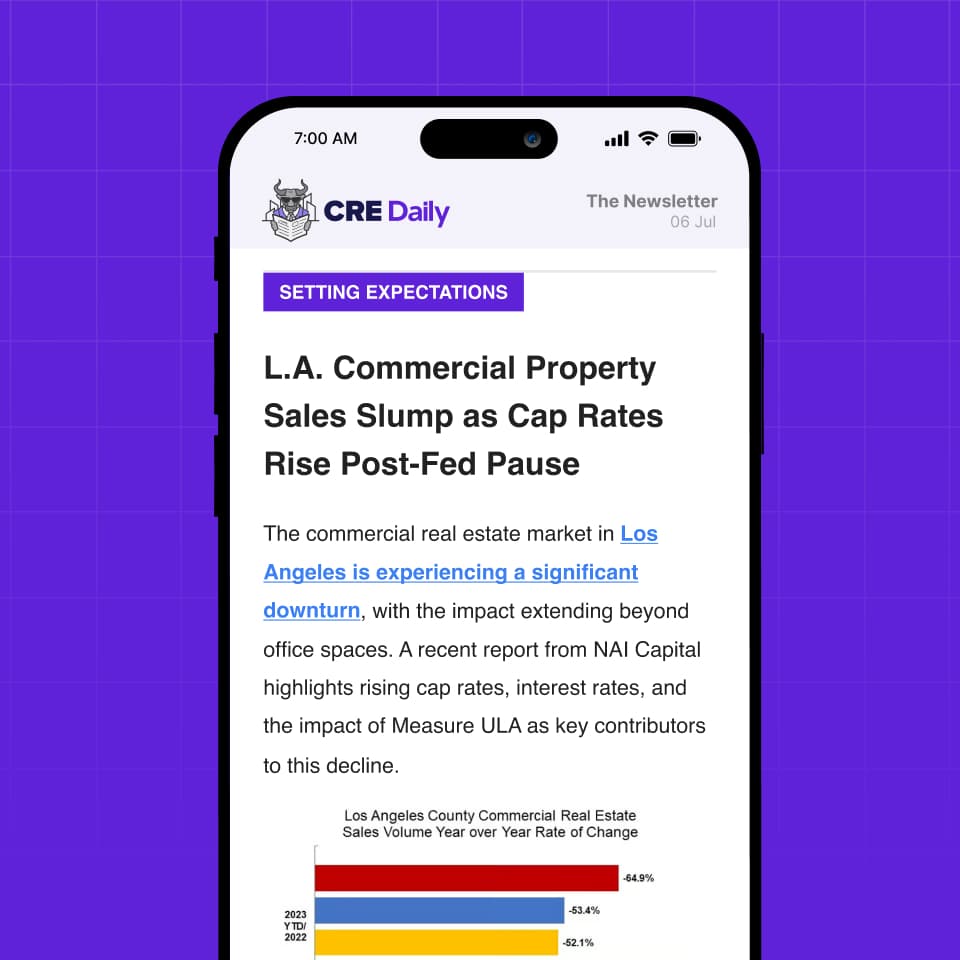- Democratic mayoral candidate Zohran Mamdani’s plan to freeze rents on stabilized apartments has sparked backlash from small landlords struggling with tight margins.
- Owners cite inflation, high interest rates, delayed city permits, and delinquent tenants as major financial pressures—conditions worsened, they say, by the prospect of a rent freeze.
- Sales of rent-stabilized buildings are down significantly since 2019, with properties sitting longer on the market and trading at lower prices—some cut by 10%.
- Mamdani’s campaign says small landlords will have hardship exemptions, but some still fear the policy would force a wave of sales and further stress the sector.
Frozen Rents, Frustrated Owners
Democratic mayoral candidate Zohran Mamdani has made a rent freeze a key part of his housing platform, reports The WSJ. The policy would apply to rent-stabilized units in New York City. While the pledge is aimed at curbing housing costs for tenants, it’s sending shockwaves through the city’s small landlord community.
For these mom-and-pop property owners—many of whom manage small buildings with fewer than a dozen units—the proposal threatens already fragile bottom lines.
Breaking Even At Best
Post-pandemic inflation and high borrowing costs have tightened margins for smaller landlords. Some say they’re lucky to break even each month, with rents that barely cover mortgages, taxes, and maintenance. Renovation projects are often stalled by slow-moving city permitting, adding to the pressure.
Landlords like Brooklyn-based Ebony Hannibal say they are facing insurmountable financial strain. Hannibal is currently waiting on a refinancing decision and is in the middle of three costly evictions involving tenants with tens of thousands in back rent.
“If Mamdani wins, I’ll sell,” Hannibal said. “Every single landlord in my neighborhood has similar experiences.”
Get Smarter about what matters in CRE
Stay ahead of trends in commercial real estate with CRE Daily – the free newsletter delivering everything you need to start your day in just 5-minutes
Investment Slumps And Pricing Pain
The market for rent-stabilized multifamily properties has already softened. According to Ariel Property Advisors, building sales with at least 75% stabilized units fell to $751M in 2024—more than 70% below 2018 levels.
Properties are also sitting longer on the market, with average listing price cuts of about 10%, said Paul Rahimian of Parkview Financial. The uncertainty around further regulation, particularly under a potential Mamdani administration, is chilling investor appetite.
A Safety Net For Some?
Mamdani’s campaign says small landlords won’t be left out in the cold. His plan includes support for owners who can demonstrate financial hardship through a “Comparative and Alternative Hardship” exemption, which would allow some rent increases based on need.
“Zohran is committed to protecting the livelihoods of small landlords and maintaining a stable, functioning property market,” said campaign spokesperson Dora Pekec.
Still, many remain unconvinced that the policy will protect the smallest operators. These landlords often lack the resources of institutional owners and rely on rental income as their main source of financial stability.
The Bigger Picture
Tenant advocates argue that the rent freeze alone is not what’s sinking small landlords. Cea Weaver, director of NYS Tenant Bloc, pointed to rising insurance premiums and the impact of immigration enforcement on building maintenance staffing as greater risks.
“Freezing the rent is not make-or-break for a landlord,” Weaver said.
Nonetheless, with prior expectations that rent regulations might be relaxed, Mamdani’s primary win has shifted the outlook.
“Mamdani deflated that idea,” said DJ Johnston of Matthews REIS.
Why It Matters
The tension highlights a growing divide between tenant protections and landlord sustainability. New York City has over one million rent-stabilized apartments. Any policy change affecting them could have widespread impacts on both affordability and housing supply.
For small landlords, the stakes are high—and many are reevaluating their place in the city’s evolving housing market.


















